Lynch Country Club: The Course Time Never Found
- Dooner
- Oct 31, 2022
- 15 min read
Updated: Jul 17, 2024

During the coal boom of the early 20th century, boom towns appeared around mines. Since coal wasn't as sexy as gold, movies weren't made about the trials and tribulations surrounding the quest for its riches. One man couldn't dig into the earth and strike it rich on coal the way you can the shinier things. It took a village to extract it, a train to ship it to a city and another tribe to refine it. Yes, gold is far more romantic.
Coal, on the other hand, typically borders on the wrong side of tragic. After all, if you went after gold, you were a 'prospector'. If you were after coal, you were likely after a job and a roof over your (or your family's) head. Coal didn't just appear in places like San Francisco either. It's buried far underground in some of the most unforgiving and least navigable terrain in our country.

The towns that emerged around the mines shared the same rugged characteristics as the landscape around them.

Coal towns were different from their California Gold brethern. For one, most were owned by the coal company itself. There was no mayor or elected local government. The company owned all the buildings - including the houses. If you lived there, someone in your home had to work for the company.
Each company paid their employees in their towns in their own currency (script) that forced their workers to "owe their soul to the company store".
It's a chapter of American History that appears to have been told just enough so future generations don't repeat it, but is whispered as to not wake the ghosts of the past.

However, some companies did invest in their town's infrastructures more than others. Perhaps the gold standard of coal company towns of the era was built in remote valley in extreme southeastern Kentucky. What started as a remote outpost in Harlan County in 1917 became the largest unincorporated city in the United States and the largest coal camp in the world with over 10,000 residents (by the 1940s).
Welcome to Lynch, Kentucky.
In its hey day, it was known as the 'Cadillac' of coal towns. Named after the 'father of mining safety' & US Coal & Coke Co. head, Thomas Lynch, the town had all the things you needed: a hospital, schools, department store, post office, police force (company owned of course), running water, a bathhouse, massive hotel and jobs. Lynch also had the largest coal tipple in the world at the time of its construction.
In addition, it had a lot of wants too: a theatre, semi-pro baseball team and stadium, semi-pro basketball team and even passenger rail. All paid for, built and owned by the United States Coal & Coke Company, a subsidy of US Steel.
After World War II, the coal industry shifted and many jobs left town as a result. When the passenger train - which ran twice daily from 1923 until WWII - departed Lynch on January 1, 1956, it never came back. The jobs didn't either. US Steel began selling off the houses in the early 1960s. The high school closed in 1981. The mine was sold in 1984.

By 1980, the population was down to about 1600. Today, there are only 635.
Why the history lesson though? We're getting there. Did you find out that Bruce Willis was one of the dead people in the first act of The Sixth Sense? No. You have to build to that.

When you're trying to play 1000 courses and you don't move around a lot, you have to get creative and you have to drive... a lot... to play new places. One of those new unexplored places for me was the Kentucky coal country. I'd had on the radar a daytrip to Harlan County (Justified fans please stand up!) to knock out a couple nine-hole tracts to make the four hour round trip (minimum) worth the effort.
Since I was going to be up that way, I was on the hunt for a third course (that I hadn't yet played), yet Google Maps was not offering much assistance (no, Putt-Putt doesn't count)...

For scale, Harlan CC & Sleepy Hollow (no, not THAT Sleepy Hollow) are 30 miles apart. It appeared that it was just going to be an eighteen hole day. After the Sleepy Hollow round, I had decided I'd take the curvy road from hell up and over Black Mountain - Kentucky's highest point above sea level). To make sure it wasn't a gravel road, I began to zoom in on the Google Earth view and found something that didn't pop when I simply searched 'golf courses'...

"What the hell?" was probably my first reaction, but seeing the knife & fork icon probably meant I was going to find a roadside diner ironically calling itself a country club. Upon taking the bait and zooming in for a closer look...

"WHAT THE #@%!?!?!" What was I seeing? I started counting greens. 1, 2 ... 7. Seven? Were two hiding in the shadows? What in God's Name is this place? If it was 10:00pm when I found it, Google was about to work overtime for the next three hours as I obsessively searched for ANY info I could find on what appeared to be a seven hole short course out in the middle of nowhere.
All I could dig up was a seldom used Facebook group page for the pool at Lynch Country Club. My heart was resigned to the fact the course was probably no longer in existence, but I sent a detailed probe over to the group leader via email and a simple DM to the group on FB to see what they could tell me about the course (if it was still there) and simply asked, 'what are your golf rates?'
A few days I waited without a response, but I couldn't get Lynch out of my head. How could this be? First, we LOVE short courses. Second, how could it not have shown up on of the endless searches I'd done to find new places to play (close to home) in the last ten years? Third, how does a course like this even exist out here in a place like this:

All of my common sense told me this was just not going to happen. I'd done some light reading about the town's history and pretty much resigned all hope as days turned into weeks without a reply. Until...

Was I more excited when I got the invite to attend The Masters or to find out Lynch Country Club was indeed a golf course I could play? I'm honestly not sure. I had no idea what I was going to find when I got there, but I was just excited I now found a third course to play on that day-trip and what might be the most well hidden golf course in America!
The only bad news was I was going to have to wait until October to make the trip up there.
The leaves hadn't quite turned, but I didn't care (colorblind people only get so much enjoyment out of leaf peeping anyway). September was a grueling (yet quite successful) month in the office, which also meant I was overdue to play. It'd been almost two full months since my last round, so it was time to make up for lost time. A triple-header was just what the doctor ordered.
Harlan Country Club was first up. It was perhaps a little less tough to get to than I first imagined. After a ninety minute car ride with no answer to calls on the way to make sure they were open, I arrived to see a closed sign on the window and no cars in the parking lot.

I backtracked the winding entrance road where I had waved to a man blowing freshly fallen leaves back into the forest from which they came. He instructed me to grab a cart and settle up afterwards. I happily obliged and rolled through it's rugged (and freshly aerated) nine holes as the fog literally burning off the fairways.
It had some fun aspects and a couple nice shots to play, but the sub-2500 yard course has probably already seen its best days. It has a place here though and we're sure a loyal follow from locals. It's got the intent, just needs the capital to help it along.
< use the arrows on either side of the photos to navigate throw the slideshow >
Upon telling the gentleman who'd retreated from leaf blowing to the pro shop my next stop was Sleepy Hollow, he said, "you should check out Lynch too, par 3 course. You'll really like that one". My heart fluttered a bit with anticipation.

After a drive behind a string of dump trucks loaded with stone, I arrived at Sleepy Hollow Golf Course in Cumberland to find only a couple of cars in the parking lot - another welcome sign. Speaking of welcome signs, this one said the course was constructed in 1922 by the International Harvester Company.
The gentlemen behind the counter kindly rattled off a pretty detailed version of the course's history, which included numerous changes to the routing and ownership.
As coal seams were discovered in the hills, business naturally took precedence over leisure. Certain holes would come and go as the mining operation moved around the mountain for many years. It became a Kentucky State Park course for a number of years before the state sold it to the county. By its current appearance, it looks to have been professionally renovated (architect unknown) sometime in the last twenty years. Aside from the greens recovering from a summer bout with a fungus, the course was in great shape considering the catastrophic rainfall throughout the region the entire season.
< use the arrows on either side of the photos to navigate throw the slideshow >
Wanting to hear my thoughts, my new friend from the pro shop grabbed me on the way out. I told him it was a blast and that I hoped to return when the greens were healed up. I also mentioned I was heading to Lynch next to which he replied,
"Oh, you're going to love that place!"
I couldn't plug Lynch Country Club in the GPS fast enough... 5.7 miles to go.
Driving over from Cumberland, KY to Lynch, you pass through Benham, another former coal company town, home to the Kentucky Coal Mining Museum and not much else. About three miles from my destination, I came upon a golf cart heading my direction. He was moving pretty well I thought, but probably just an easy way to go from place to place that's better on gas mileage. Then I saw the Sunday bag affixed to the back and the gentleman's attire was acceptable for golf. Then I said aloud in the car...
"Son of a... he's driving that thing to the course!"
I politely waited for a dashed center line to pass and nod. I was so damn excited by this time I could hardly wait to get to the course, then I drove into town and began to see this story unfolding before my eyes.

I'll admit, I didn't know what a tipple was before researching this story. I do now. It smacks you in the face as your round the first bend into Lynch.
Then you see something that resembles a power plant. Why? Because it actually was one! The area was so remote they had to build their own power supply when they got there. Like the tipple, it has long been out of commission.
Then the train station, the bathhouse, the company store, a post office, buildings that were probably once a school or corporate offices. Most of them boarded up and left to rot, though some had certainly received some preservation efforts.
I drove through slowly, but after debating with myself for half a mile, I knew I needed to go back and take at least a few minutes to absorb the moment. While doing that, my golf cart friend retook the lead on the race to the course. I could not have cared less.
My father loved American History. It's certainly a trait he passed down to me from a very young age. He passed away earlier this year. Perhaps in some ways, he was at the wheel that turned me around. It was time well spent - standing IN history for a few moments, maybe even with him on my shoulder.
As I rolled out of the last corner of town, I appeared to be heading back into the wilderness when suddenly the course just appears out of the woods. A quick glance in the mirrors found no tail, so I disconnected the phone GPS to capture that first impression...

I almost didn't believe it was real until this point. I also had probably set myself up for a huge letdown by building this course up WAAAAAAY too much in my own mind and anticipation.
Yet, as I made my way down the highway which bisected the course, to the driveway which bisected another part, past the pool to the parking lot which bisected it from the last part, all I could think of was this...
If Indiana Jones played golf, Lynch Country Club would have been the MacGuffin in the fourth movie instead of the ridiculous Crystal Skull storyline. Better yet, I hear Mr. Ford is passing the fedora in the next installment. Just saying...
I was greeted by a member in the parking lot who gave me the lay of the land and even offered to pay for my round. I took in a few stories and tips about the course and strolled all the more gratefully past the Dog House and over to the first tee.
The first tee is rather large and nearly adjoins with the second green - which apparently also serves as an informal practice green. I pegged a tee in the ground and snapped a few pics. Through the viewfinder I saw a familiar outfit on the green next to me - the golf cart pilot from the drive in! Walking in his direction I inquired if it was indeed the man I raced on the way here. After confirming, he extended his hand and introduced himself...
"Rainbo Johnson. Welcome to Lynch!"
With a smile and a sincere thank you, we continued the conversation I'd started with my other new friend in the parking lot, as if Rainbo had already heard every word. Turns out, Rainbo lived back by Sleepy Hollow, meaning his golf cart ran the 10-mile round trip on (presumably) a near daily basis.
If I was that close to this place, I'd darn sure be here every day too!

Walking around the second/practice green, it was impossible not to notice the turtleback humps in and around it. But not a Donald Ross turtleback. No, we're talking Morla from The Neverending Story turtlebacks! Ok, maybe not that big, but they're bold and they're beautiful. The stimpmeter doesn't need to go off the charts with curves like these, so you'll find them a little slower than they look, yet likely far more enjoyable for the user.

Heartbroken, I had to decline the offer to join their upcoming afternoon game so I could be home for dinner (fact check: really so my wife keeps allowing me to do this stuff and not leave me). I returned to my tee ball and proceeded to thin one that was surely headed for an honored place down in the holler behind the first green. However, I struck it poorly enough that the ball hit the green and somehow died pin high, as if the Golf God's reached down and muttered, "WE GOT YOU!"
< click any photo to expand to full screen >
Turns out, it was just one of the signature humps catching the skulled wedge like a first baseman scooping a low throw out of the dirt. A couple of putts brought me home with a par and the great feels just kept flowing.
The second hole played off the highest point on the course back towards the pool. A good bailout left me just left of the green, but the up and down attempt scuttled. I could not have cared less about the scores. The rest of Rainbo's group was starting to assemble. It wasn't going to take much for them to talk me into starting over with them if they tried, so I scurried across the parking lot to the third tee to stay on track to be home by dinner!
Second hole above | Third hole below
The third hole was the exact same distance, so I pretty much followed the same script on number three that I failed with on the second. After that second straight bogey, it was on to the forth at two-over for the round. If you had to pick a signature hole at Lynch, most people would probably choose this one.

You've got 133 yards - all carry over the creek, the flat beyond it and inside the bend in the highway running the entire right side - up to a plateau seemingly cut right from the mountain. It's one thing to get it up on the level, it's another to find the green. Miss it anywhere and it's likely the happiest bogey you'll ever make. I would wager that this hole has few up and downs than any in Kentucky.
Thankfully, I found the green from the tee and the bottom of the cup between the falling leaves in par. It's also cool to take the tee to green walk on the highway!

Once you retrace your steps down the stone staircase, hop over the road and back towards the 5th tee. Without a scorecard nearby, my parking lot friend thankfully gave me a run down of yardages - including a tee shot from 190+ yards. I contemplated loading the Sunday Bag, but upon hearing this opted for the regular setup (minus the lumber) for the maiden voyage.

Glad I did, because the 194 yard shot from the 5th tee above Looney Creek was all of that. Were the Golf Gods honestly watching out for me this round? Sign number two appeared in the form of a Praying Mantis on the tee marker at the fifth! In some cultures (golf being one of them of course), they can be a sign of good luck or fortune.
Tucked back in the far Western corner of the valley, the 5th green is the first one you saw on the way in. Not that you'd remember it from that first glance, but its one of the smaller but flatter greens out there. The 4 iron hit flush and true. After a couple of putts and back-to-back pars, I was heating up, still down two to par but still with two to play.

The sixth is likely the easiest hole at Lynch. Teeing off above the 5th green and directly adjacent the highway, you can hear vehicles coming down the road through the trees. With one approaching, I chose to swing away rather than pause for it to go by. As soon as it left the club, my heart rate picked up.
I've never had an ace in my 42 years on this Earth. One of my greatest fears is finally getting one and not having a witness. As the truck emerged from the bend behind me, I extended my PW out from head to handle in line with the flagstick. The shot fell to the ground on the front of the green as the driver was passing me. We quickly locked eyes and without a word, he understood my ask - which was to attest anything that might or might not be about to happen on the green.
As I quickly returned my gaze to towards the flagstick, the ball had taken a big hop forward, still right on line. It seemed like it rolled for an hour towards the hole. A las, it painfully rolled right passed the cup, by what had to be two inches or less given the ball's final position.

It was close enough for the driver to scream in agony out his open window as he passed by, slowing to poke his head out to shout 'ALMOST HAD IT' back at me. The Golf Gods shunned me yet again as if to say, 'let's not be greedy, Pal, we brought you here already'.
Be that as it may, a tap in birdie gave me a chance at even par on my way to the final hole.

Skipping back across the highway and in front of the 4th green, where Rainbo's group had nearly reached. He shouted an inquiry about an Ace occurring, which left me wondering if the driver of the car was in on the gag. I replied with regret but optimistic about my chances to seal the deal on par (which if you visit us often, you know never happens).
I'm not sure if I was sure if it was anticipation, the beauty of the surrounds of the moment or perhaps the thought it was about to be over, but the tee shot was less than good enough for a chance at birdie. Bogey showed its moderately ugly face again and I finished back at two over, but not before marveling at the final green and it's 3-foot drop from Morla to front fringe. The front was wide enough you could put the pin down there too, making it a completely different experience.

Speaking of experience, Lynch Country Club turned out to be one of the best I've ever had on a golf course. Would everyone else have the same? No, probably not. Why does it mean so much then? It's the whole point of why things like our own Golf Crusade, Sugarloaf Social Club, The Broken-Tee Society & The Golfer's Journal exist...
The pursuit of something greater or unknown in this world - let alone the world of golf - is becoming harder and harder to come by. How can it be that a place this incredible can go virtually undetected in the social-centric world we live in today? We certainly weren't the first ones to discover it, but we aim to help others experience something they never knew existed.

The town of Lynch is still on the map. They've turned one of the mines, Portal 31, into an exhibition coal mine. If you ever wondered what it was like to work in the mines, you can now see it for yourself first hand. The houses there were built to last, as were the stone buildings the company once used. Many of them are just shells of themselves now, but stand as a historical marker of a widely by-gone era.
If the town of Lynch, Kentucky - or any number of towns like it - can be forgotten by Time, it makes it all the more amazing that Time has never caught up to the likes Lynch Country Club.
Sincerely Fores,
Your Golf Crusade
P.S. We submitted an edit to Google Maps - the knife and fork are no more!


If you would like to learn more about the history of Lynch, please visit this 2017 story by Ann Schmidt for DailyMail.com. Many of the historical photos used in this story came from hers and there are LOADS more where those came from.
















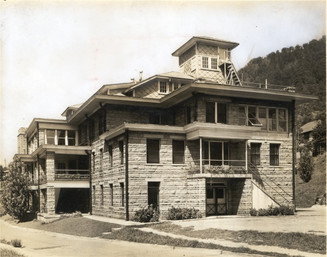



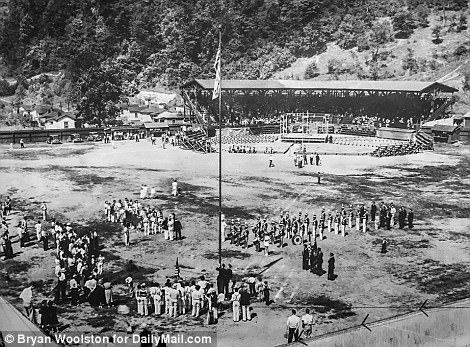




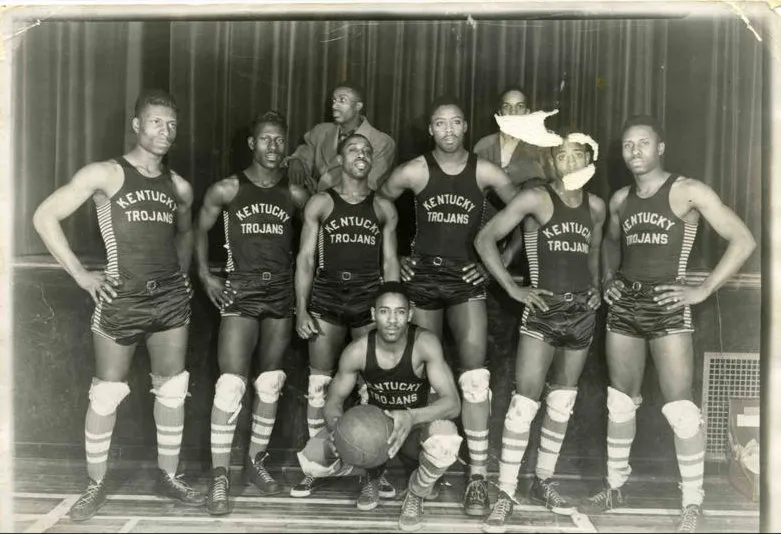





































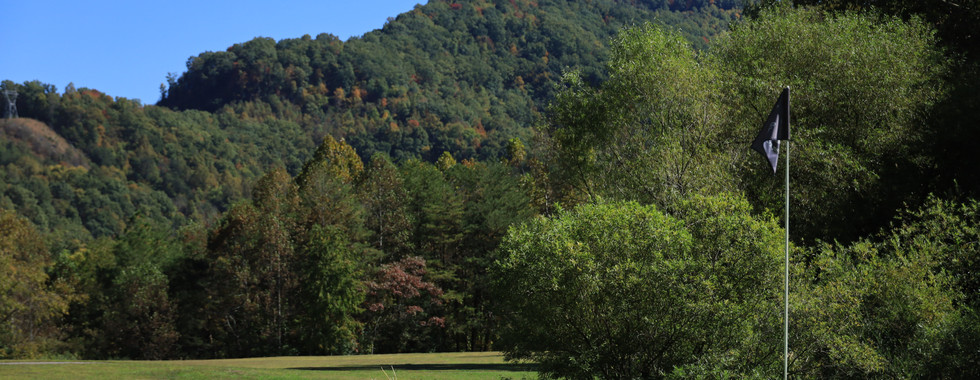







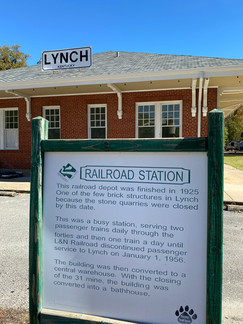

























































































Loved the story! I share your love of small town Appalachian history and I enjoyed taking this journey with you. I'm glad you specified you were member sponsored, I mean, the sign clearly says Members and Guests only!